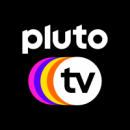The importance of collaboration hasn’t changed since the tech world started working remotely — but certain aspects of the “how” behind that collaboration have.
Vice presidents from product and engineering teams at television service provider Pluto TV said they moved their usual quick, in-person conversations to solve problems to video meetings and Slack. For design and prototyping, they implemented platform Figma and collaboration whiteboard Miro do their visualization work.
Aaron Alin, an engineer at adtech company The Trade Desk, said video chatting has made for easier collaboration because his teammates and leaders are more accessible than they were in the office. Alin said Microsoft Paint — the tool legendary for its simplicity — combined with Zoom make for efficient virtual whiteboarding sessions.
For both companies, the transition took some adjusting to.
The companies are now accommodating more flexibility in their teams’ schedules and encouraging empathy, as people aren’t in one central office location. Teams took care to connect on non-work subjects just as they would at the coffee maker and worked to avoid virtual fatigue. Some employees miss the in-office connections, while others are reveling in no longer commuting each day.
Discover how teams at these two companies shifted their collaborative cultures and strategies to the world of remote work.

How is your team adapting to remote whiteboarding or sprint planning sessions?
I have been working remotely for the last 10 years, so I’ve had plenty of time to figure out good ways to communicate. I played around with fancy tools like drawing pads and shared whiteboard applications, but I keep falling back to the simplicity of desktop sharing with MS Paint. With some basic shapes and the ability to type, I can communicate far better in this virtual world. Even greater collaboration is unlocked when adding in Zoom’s ability for participants to annotate on top of drawings. There were actually a few times where I was thrown into a traditional meeting space and I desperately missed the virtual world.
I keep falling back to the simplicity of desktop sharing with MS Paint.”
How are your product and engineering teams communicating differently now that everyone is remote?
In the office, there was a group of people that suffered from noise issues. They often had to find quiet places to talk, which made ad hoc conversations awkward. Time and energy went unused watching them navigate the building looking for a free spot, only to find out 10 minutes later that the area was reserved. It’s much easier to jump on a quick call with those people now.
What’s helps ensure successful remote collaboration between your product and engineering teams?
We try to avoid large meetings that are scheduled well ahead of time. Instead, we call the expert who can unblock us at that moment. We heavily use Slack for straightforward text communication, but quickly switch to Zoom when the conversation gets complicated. This transition is important because seeing facial expressions is critical to showing empathy and navigating confusion.

How is your team adapting to remote whiteboarding or sprint planning sessions?
We use Slack, G Suite and Atlassian tools heavily to coordinate everything we do. We also adopted many new tools, like Figma for design sprints and ideation. Team members can draw using paper and pencil, then upload those files for collaboration with other editors. It allows both introverted and extroverted team members to contribute to solutions.
Miro is a good tool for collaboration on sprint planning and retrospectives. And Lucidchart is good for architectural and flow diagrams. These tools have mechanisms for collaboration that allow us to provide feedback and edit documents or integrations with our Slack, GSuite and Atlassian tools. The expanded use of these collaborative tools tie visuals into our video conversations so we can iterate on our work before or after a meeting.
It is important to have a few weekly meetings where people get together just to chat.”
How are your product and engineering teams communicating differently now that everyone is remote?
We’re communicating more methodically and leaving less to chance. Video conferencing makes communicating more difficult, so we spend more time trying to resolve issues or create momentum for things. I expect future technologies to address this aspect of telecommunication with regard to audio, video and scheduling.
It is important to have a few weekly meetings where people get together just to chat and remember that they are a team, not just faces on a screen. I feel that we’ve been productive during this time of remote work, but it comes at risk of people burning out. Nonstop video conferencing has proven to be mentally tiring for some people, while others love it and don’t miss the daily commute. Our team falls on both sides of that equation.
What’s helps ensure successful remote collaboration between your product and engineering teams?
We keep track of any small outstanding items that weren’t resolved during scheduled calls. We lost those hallway reminders like, “Hi, did you get an answer to...?” We have to be on top of sending reminders over Slack and scheduling follow-up meetings. But impromptu discussions have been replaced with scheduled calls. Our calendars are now filled with requests for time. And in some ways, we now have a more accurate record of our daily workload.
I have a whiteboard next to my desk at home with a color-coded list of to-dos and the status of those items. I get great satisfaction when I can erase an item from my whiteboard as “done.”










